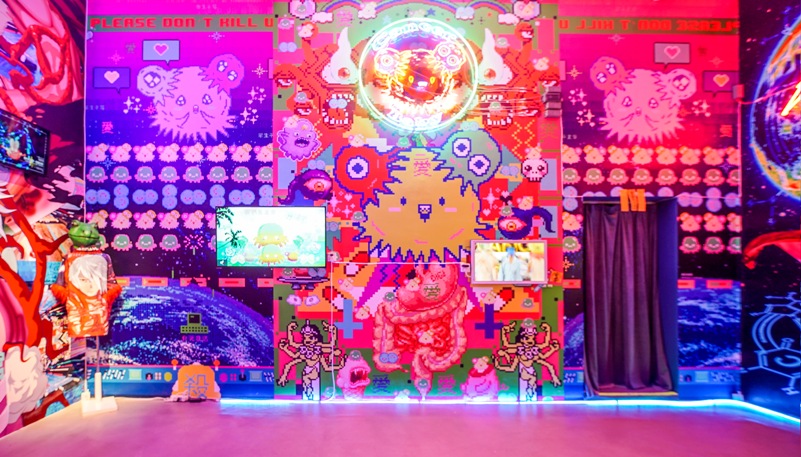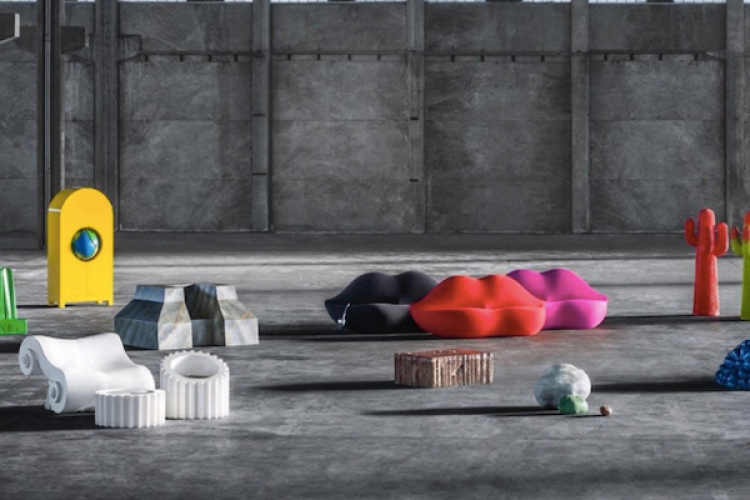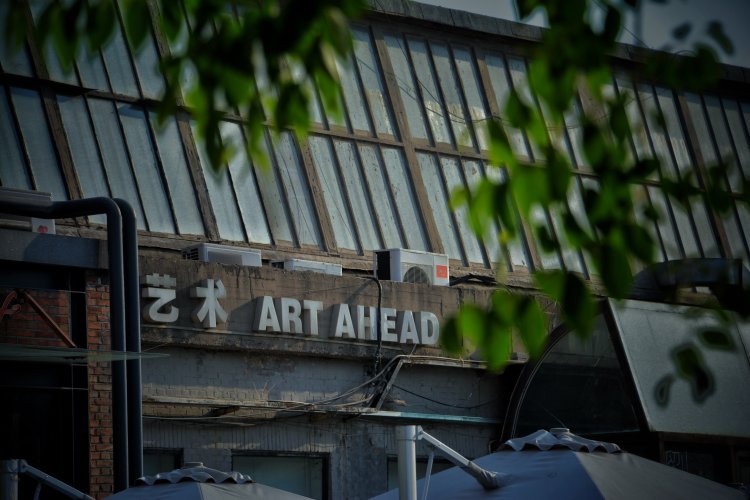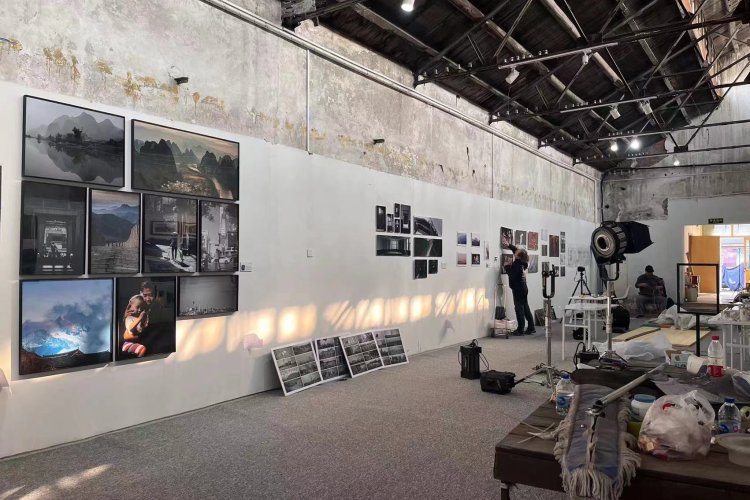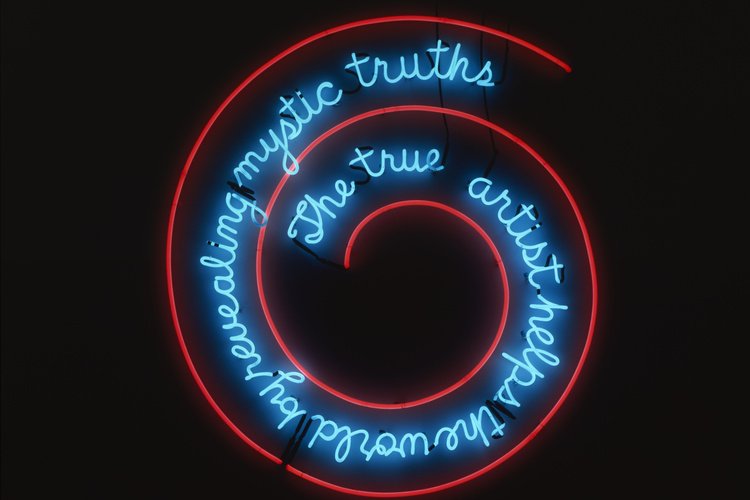State of the Arts: Lu Yang Explores 'Neuroscience and Religion' in Encephalon Heaven at M Woods
Entering the world of Encephalon Heaven feels like experiencing an otherworldly vision, like you're somewhere else: a haunted house maybe, or in a chamber where a demonic creature is about to be summoned, a magical girl-devoted museum, a dazzling arcade, or (maybe in the most impactful way) a neon church or temple with the most unexpected set of visuals. In reality, it is the first solo show of the Shanghai-born and -based artist Lu Yang in a Chinese museum.

When asked about the concept of the exhibition, Lu Yang's answer was laconic, describing how the two main branches intertwining throughout the entire exhibition are the pillars ever present in her work: neuroscience and religion. These themes are apparent in the powerful visual elements the artist uses and overlaps in a masterful way to build her worlds.
But far from being a heavy set of concepts, Lu Yang develops a narrative in which elements of horror, fashion, pop references, otaku imagery, and music help to create a highly entertaining and psychedelic discourse delivered through a cutting-edge technology veneer and multilayered rich-in-imagery video installations.
In "Electromagnetic Brainology" (video, 2017, pictured above) we find ourselves in a sort of neon pagan temple in which the devotees/spectators are facing a five-video installation involving four deities that draw heavily from Hindu iconography. However, they've been reinterpreted through Lu Yang's lens as dancing arcade game characters, each with special powers associated with the functions of different areas of the brain. The video installation incorporates motion sensor technology and a soundtrack contributed by the renowned Japanese producer invisible manners.
Among her previous works on display, there's also Lu Yang’s "Delusional Crime and Punishment" (video, 2016), which utilizes endless gender-neutral versions of herself to depict the horrors that await those who fall into the pits of what appears to be a Buddhist hell. A voiceover follows along, using strictly scientific language to describe how the brain processes pain and how different areas of the organ are involved in the recognition of associated primal feelings. The masterfulness of the animation, with its multiplicity of layers, plus the graphic elements of the story, the spot-on music, and the installation surrounding it all, combine to promise a very intense experience for those able to endure the entire story.
Below, we caught up with Lu Yang to discuss how these pieces came to be.
TBJ: What role does music bring to the overall appreciation of your work?
Lu Yang: Music is very important in my works. I’ve cooperated in the past with many different producers/musicians/bands. Most of my works are music videos. Music is also part of the package of my ideas. Whether the audience can understand my works or not, the visuals and great music can still bring fun to people. I never expect everyone to be able to understand my work [laughs].

In what ways do you feel your works relate to the current Chinese artistic context? Do you feel like you belong to a sort of artistic movement?
I don’t think my work is part of the “Chinese artists’ context," I don’t even care if people consider my work as “art." I’m just a creator/author. I am not only interested in contemporary art. I like lots of other things, if they’re fun.
How’s the creative process for your video installations? How do you envision your works initially? Do you see them as a whole in your head from the very beginning? Or start working on a layout and add layers as you see fit?
Different works come out in a different way. It’s quite hard to explain, because it’s a complex process.
How did you become interested in religious iconography and neuroscience?
They’re two different ways to understand the world. I can’t only trust my physical body so sometimes religion helps.
There’s a strong presence of gender-neutral visions of yourself in many of your pieces. What lies behind it? Could you elaborate a bit on this? Why yourself?
I started to use myself as a character because in ["Delusional Crime and Punishment," 2016, video], so many bad things happen to the character and I didn't know whom I should use, or if I should create some character, I really didn’t know what to do. So I started to use myself as the main character. This character had no gender because that’s my fantasy body. I’m just using my body to create something; it doesn’t need to be a boy or girl, just a human.

Can you talk a bit about the commissioned piece “Transcranial Magnetic Stimulation Exorcism”?
In the piece “TMS Exorcism,” I’m trying to use a Trasncraneal Magnetic Stimulation machine to treat Tourette's syndrome. I make it look like an exorcism, as a lot of the symptoms of Tourette's basically resemble the state of what’s traditionally considered by believers as demonic possession.
It seems that some of the new pieces, such as "Electromagnetic Brainology" (2017), keep referencing certain elements present in previous works, such as "Delusional Mandala" (2015) and "Delusional Crime and Punishment" (2016), (i.e. the nimbus and the presence of strong pan-cultural religious iconography). Do you intend to continue building up new shapes/creations/interpretations based on the ‘mythology’ constructed previously?
Yes, all my works are interconnected. I have always been very interested in these topics, so if I can’t tell a story in one work, then I can make another story and continue it afterward. Each one is different but they’re all connected. The brain story is not finished yet, there are more new works coming soon.
Are you interested, at the moment, in any particular collaborations? If that’s the case, which kind of collaboration?
All kinds! If it’s possible, I am looking forward to collaborating with big institutions such as museums. This kind of cooperation could give me more opportunities to make new works. Music and high tech are also collaborations I am very keen on.

Encephalon Heaven is on view at M Woods now until Feb 11, 2018. Click here for more information about the exhibition and M Woods’ program.
Images courtesy of M Woods

